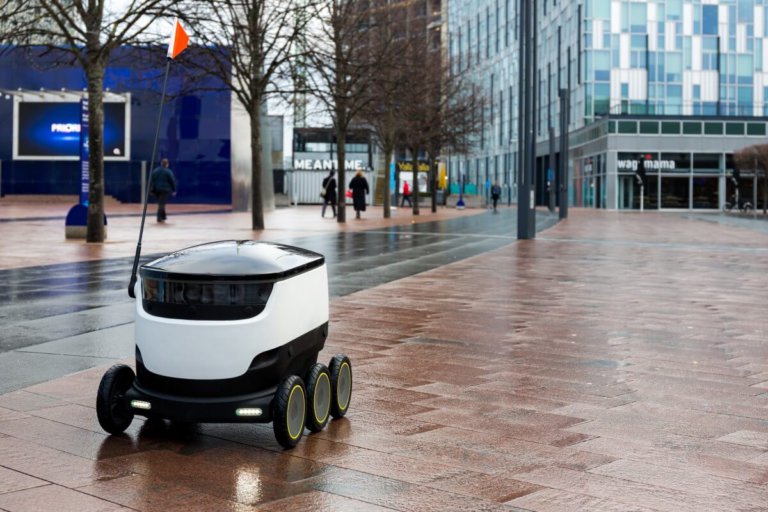
From humanoid robots being launched into space to medical mechanisms with “dexterous 3D-printed fingers”, the world of robotics is ripe with opportunity.
It’s a prosperous technology, with insight from the International Federation of Robotics (IFR) revealing that “More than 3 million industrial robots will be in use in factories around the world by 2020.”
Examining the results of its global survey of 7,000 employees in seven countries, IFR also adds that “Nearly 70 per cent of employees believe that robotics and automation offer the opportunity to qualify for higher-skilled work.”
Without a doubt, the progress of robotics vs the progress of graduates is questionable. While futurists and philosophers believe robots are coming for people’s jobs, some believe that they will harmoniously live alongside workers in peace, enhancing roles rather than ruining them.
Amid such concern, should university campuses be welcoming in robotic services or trying to shun them out?
“Miss us?”
Wait ’til you see the googly eyes the bots make when you’re back from summer break…
Pic by Instgrammer: imsofeinleib #GeorgeMasonUniversity pic.twitter.com/ZQ2R4NKqLl— Starship (@StarshipRobots) August 16, 2019
Introducing the diligent delivery bot
Imagine a campus where you don’t have to wait in line to buy your much-needed caffeine fix or study snack; a campus that supports a delivery bot service that autonomously delivers food and drinks to hungry students.
Does that sound ideal? Because for university campuses that have enrolled the services of Starship Technologies, this is a reality.
Representing a fleet of self-driving delivery robots, Starship Technologies’ robots move at pedestrian speed and weigh no more than 100 pounds.
Inherently safe, navigating around objects and people, these diligent delivery bots easily settle into campus landscapes.
For Lex Bayer, CEO of Starship Technologies, the strategic use of delivery bots at university makes perfect sense.
“An entire generation of university students are growing up in a world where they expect to receive a delivery from a robot after a few taps on their smartphone. The reception to our service both on campuses and in neighbourhoods has been phenomenal. Our customers appreciate how we make their lives easier and give them back the gift of time,” explains Bayer.
With plans to expand to 100 university campuses over the next two years, the delivery bot trend keeps rolling.
Increasing students’ appetites

Is the popularity of delivery bots set to increase? Source: Lukas/Unsplash
Have you ever felt too tired to walk to the shops or rustle up a hearty morning meal?
Or have you ever been late for lecture but knew you needed breakfast to maintain focus throughout the slides?
Bringing breakfast to your doorstep, a Starship bot can fulfil your nutritional needs by directing a delivery order to your campus location before your lecture begins.
“The initial launch has proven incredibly successful, with students taking advantage of the ease and convenience of the system. In the first days after a fleet of 25 delivery robots descended on GMU’s campus in January, school officials could only speculate about the machines’ long-term impact.
“After just a couple of months, the data showed a dramatic shift in students’ eating habits. In the first two months alone, an extra 1,500 breakfast orders were delivered autonomously,” U2B explains.
Starship is the first autonomous delivery company to complete 100,000 deliveries and have traveled over 300,000 miles. pic.twitter.com/6Tb5AtvTzq
— Starship (@StarshipRobots) August 20, 2019
Should your campus bring on the bots?
As the bots’ increase their reign year-by-year, there’s a high chance that your campus could face a fleet of delivery machines rolling in.
But the question is, should they?
While they might promote regular eating times and ease of access, they’ll also take up your campus sidewalks and perhaps disturb the tranquil, natural surroundings.
There’s also the threat of mischievous behaviour, where deviant students or passersby try to kidnap or vandalise the robots.
Regardless of opinions, however, the realm of robotics is here to stay. Evergrowing and flourishing with new contraptions, perhaps these bots will invade your campus faster than you think…
Somehow the cat knew there was treats in the delivery robot today, @StarshipRobots @MiltonKeynes_MK pic.twitter.com/jw9LejH0qb
— Phil (@oasispj38) August 11, 2019
Liked this? Then you’ll love…
The robots are coming: Here’s how AI is being used in the K12 classroom
Robots to the rescue: How technology helps chronically ill students keep up in school







